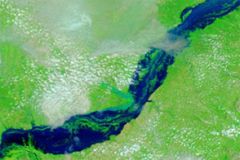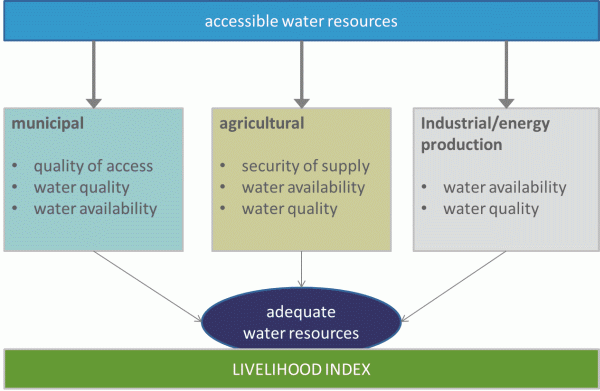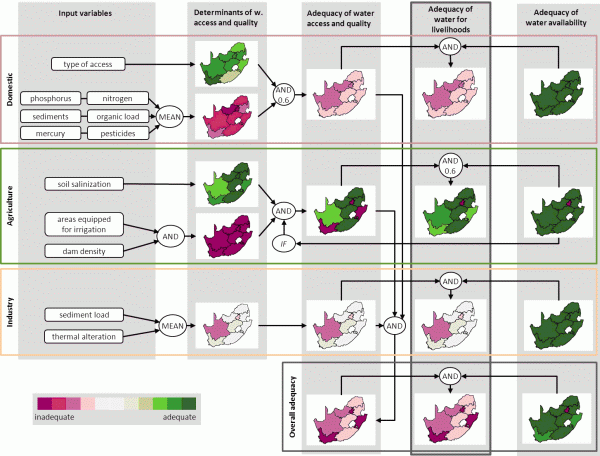Water for human use: climate and development

|
Water is a critical resource for human development. It is an essential resource in itself, but is also required for many human activities. Agriculture is the biggest user of freshwater resources (approx.. 70%, (World Water Assessment Programme, 2009)). Energy and industrial production require water, especially for cooling purposes. Other important livelihood aspects are also indirectly affected by sufficient and adequate water supply.

Figure 1: Important determinants of water adequacy for the main sectors of water use
Figure 1 outlines the most important aspects of water adequacy for livelihoods. The municipal (domestic) sector requires the least overall water resource, but adequate access to high quality water infrastructure and water quality are absolutely essential. Most of the used water goes into agricultural production. Here, water resource availability and security of supply play the most important role, while water quality is an additional aspect. Industrial /energy water access is mainly determined by the water availability and quality. However, the concrete requirements differ strongly depending on the type of production and are very site specific.

Figure 2: Outline of the fuzzy aggregation process to calculate the adequacy of water resources.
Results were calculated using water data from LPJmL, a Dynamic Global Vegetation and Water Balance Model. We calculated results for a baseline period (1981-2010) and a short-term future scenario (2011-2040) using two climate models (HadGEM2-ES and GFDL-ESM2M) and two RCPs (2.6 and 8.5). References World Water Assessment Programme. (2009). The United Nations World Water Development Report 3: Water in a Changing World. Paris and London: UNESCO and Earthscan. |